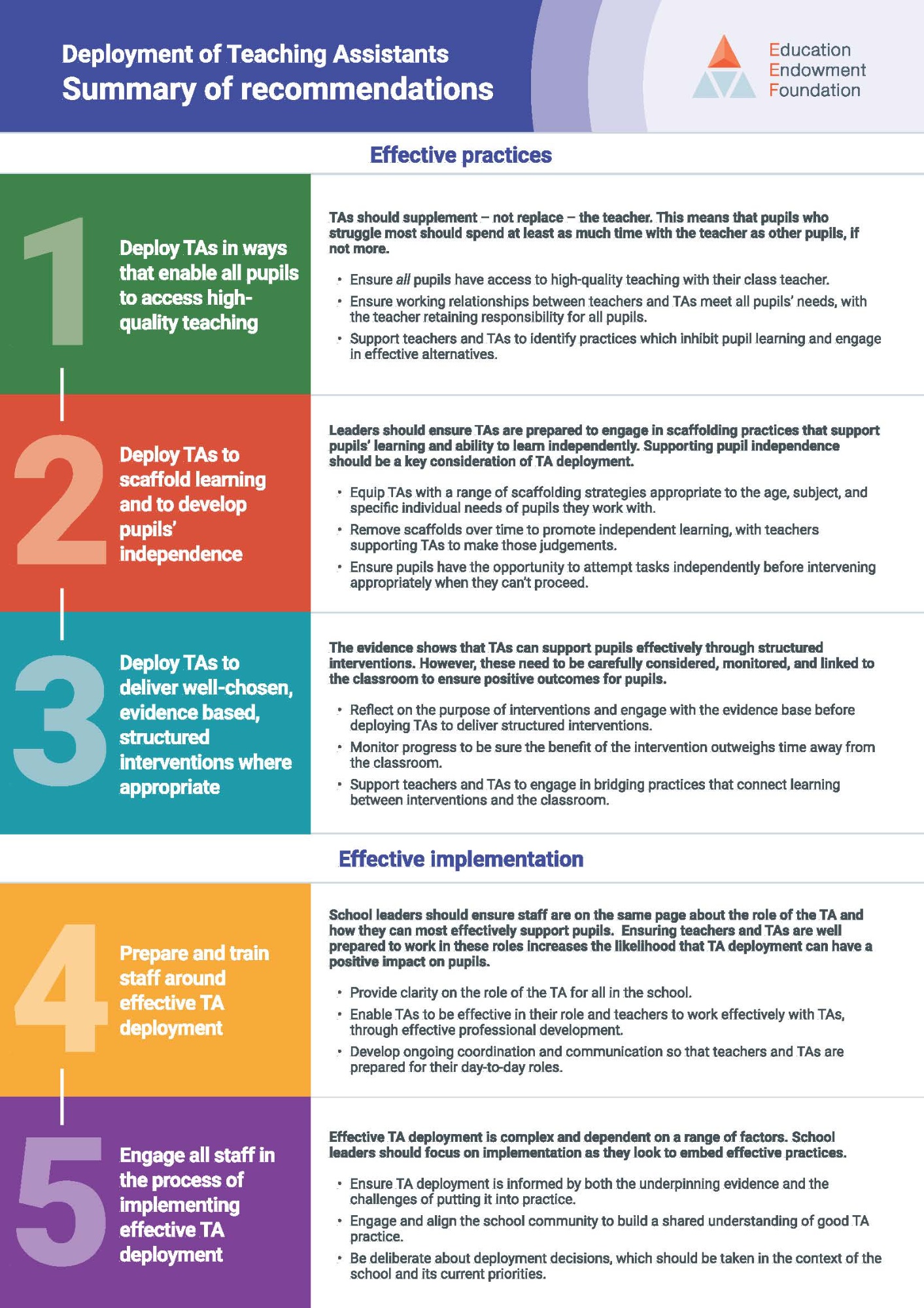EEF Guidance Report: Deployment of Teaching Assistants
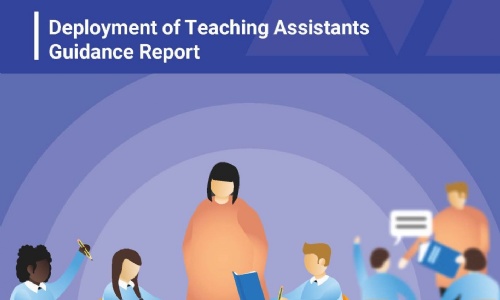
We all know that school budgets are feeling squeezed at the moment and the moment and in many cases this is having an impact on the availability of support from Teaching Assistants in our classrooms – a situation compounded by the rise in SEN which means that what TA capacity is available is understandably prioritised to supporting the additional needs of these children.
It is therefore perhaps more important than ever that this precious resource is used as effectively as possible, which means the recent publication of the updated EEF guide to the Deployment of Teaching Assistants (updated version published March 2025) is very timely. It is based on a systematic study and synthesis of 52 research studies.
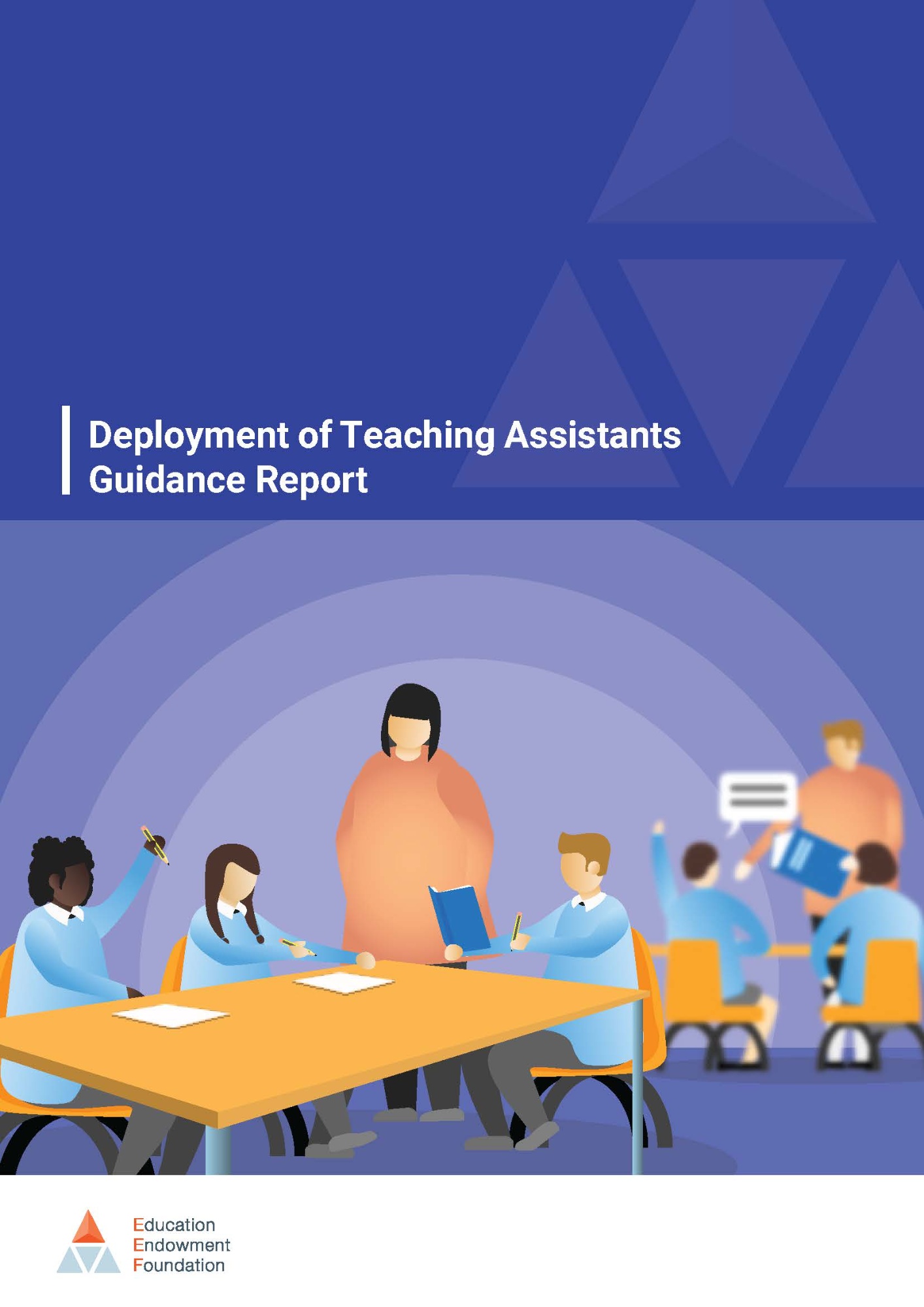 "Teaching assistants play a vital role in schools and colleges. This guidance celebrates their contributions while acknowledging the complexities of maximizing their impact. It highlights research on effective teaching assistant deployment, high-quality teaching, and inclusive learning environments, offering school and college leaders insights into overcoming barriers and making leadership decisions that unlock the full potential of this workforce.”
"Teaching assistants play a vital role in schools and colleges. This guidance celebrates their contributions while acknowledging the complexities of maximizing their impact. It highlights research on effective teaching assistant deployment, high-quality teaching, and inclusive learning environments, offering school and college leaders insights into overcoming barriers and making leadership decisions that unlock the full potential of this workforce.”
Deployment of Teaching Assistants: Guidance Report – Introduction, EEF 2025
The report, available here, adopts the now familiar three-part format of a full Guidance Report, the Summary of Recommendations poster and Additional Tools.
- Deploy TAs in ways that enable all pupils to access high-quality teaching
- Deploy TAs to scaffold learning and to develop pupils’ independence
- Deploy TAs to deliver well-chosen, evidence-based, structured interventions where appropriate
- Prepare and train staff around effective TA deployment
- Engage all staff in the process of implementing effective TA deployment,
it is Recommendation 1 that may provoke most reflection on what are perhaps the more traditional patterns of TA deployment.
“Teaching assistants should supplement – not replace – the teacher. This means that pupils who struggle most should spend at least as much time with the teacher as other pupils, if not more.”
This has implications for the training and development of TAs which, in my experience, is more often linked to Recommendation 3 with a focus on the delivery of specific interventions rather than, as Recommendation 1 could imply, spending time with larger groups to enable the teacher to focus on children with the highest needs.
What does remain front and centre in this document, like its predecessors, is reflected in Recommendation 2 – that a key element of the Teaching Assistant’s role should be that of scaffolding towards greater independence – avoiding the ‘learned helplessness’ that can develop when high levels of support are constantly available. The original scaffolding framework, plus a useful Teaching Assistant – pupil interactions document are included in the Additional Tools section.
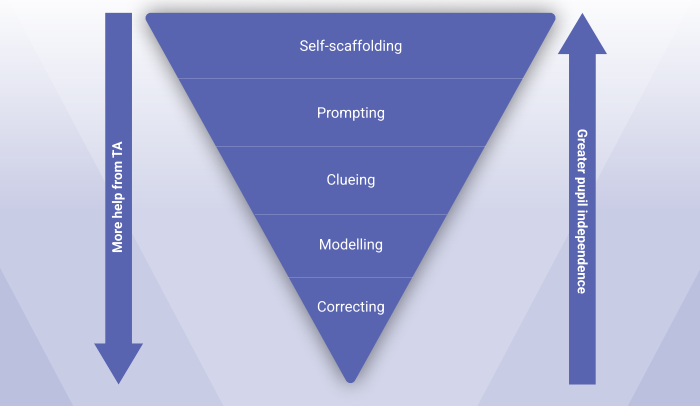
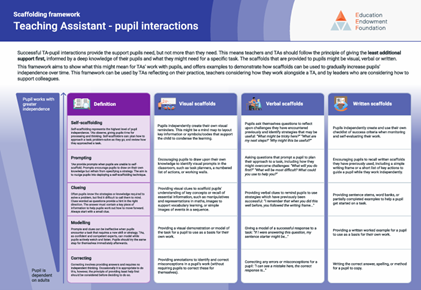
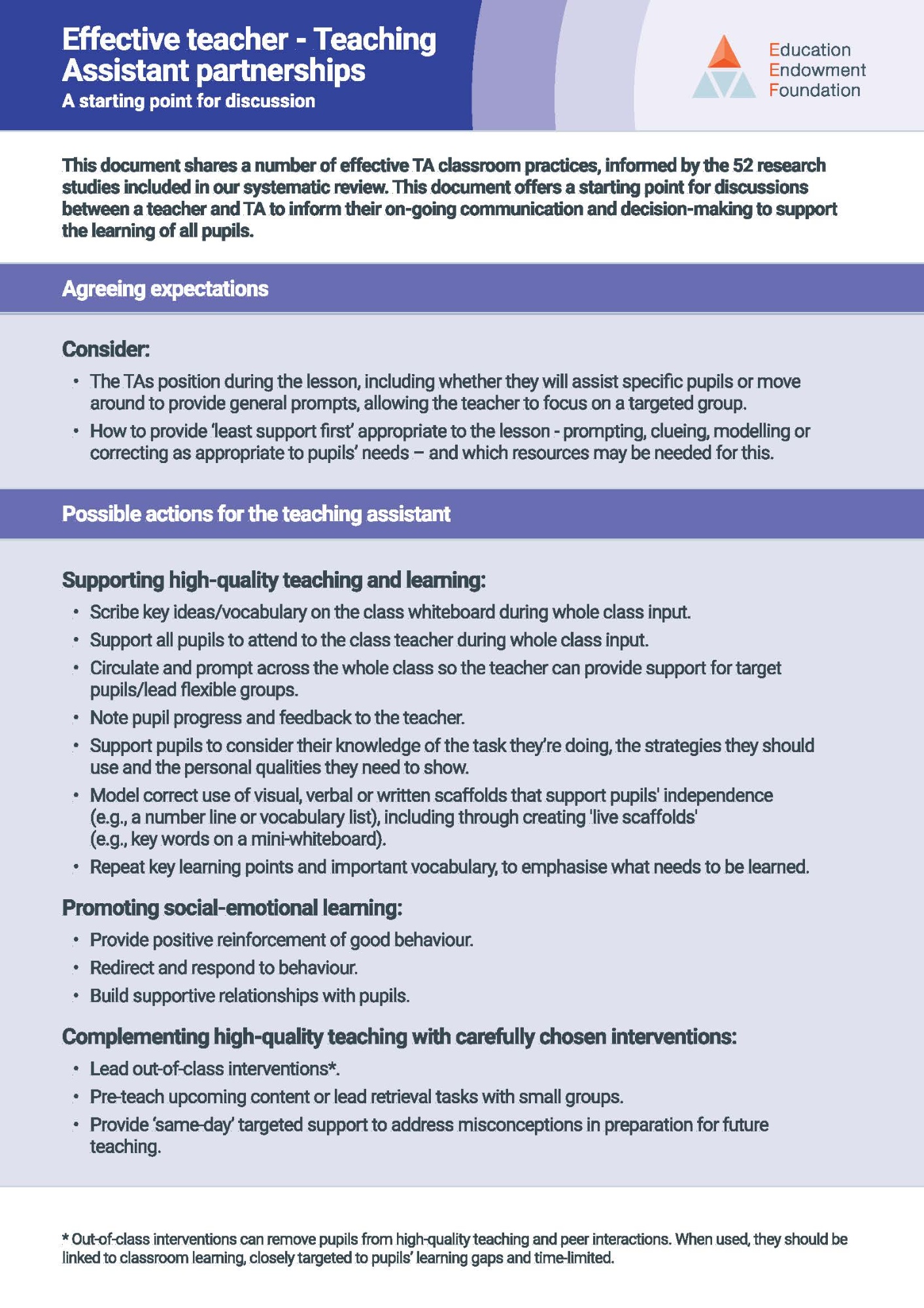 In considering the implications of the report in practice, schools will find it useful to engage with the document entitled Effective teacher - Teaching Assistant partnerships - A starting point for discussion, again to be found within the Additional Tools. This document is intended as a discussion frame between teacher and TA to agree expectations for the role, with a focus on two key pillars:
In considering the implications of the report in practice, schools will find it useful to engage with the document entitled Effective teacher - Teaching Assistant partnerships - A starting point for discussion, again to be found within the Additional Tools. This document is intended as a discussion frame between teacher and TA to agree expectations for the role, with a focus on two key pillars:
- The TA’s position during the lesson, including whether they will assist specific pupils or move around to provide general prompts, allowing the teacher to focus on a targeted group.
- How to provide ‘least support first’ appropriate to the lesson - prompting, clueing, modelling or correcting as appropriate to pupils’ needs – and which resources may be needed for this.
However, it could equally be a valuable starting point for senior leaders or the whole teaching staff to reflect on current practice, identify adjustments and consider any associated training needs.
“For school leaders, this report identifies practices that can stand in the way of TAs’ ability to help all pupils, including pupils with SEND, make progress. It also highlights research evidence that shows how good leadership decisions, including around effective implementation, can unleash the full potential of this workforce.” EEF 2025
Deployment of Teaching Assistants | EEF
Read our other Spotlight on Evidence articles here.

